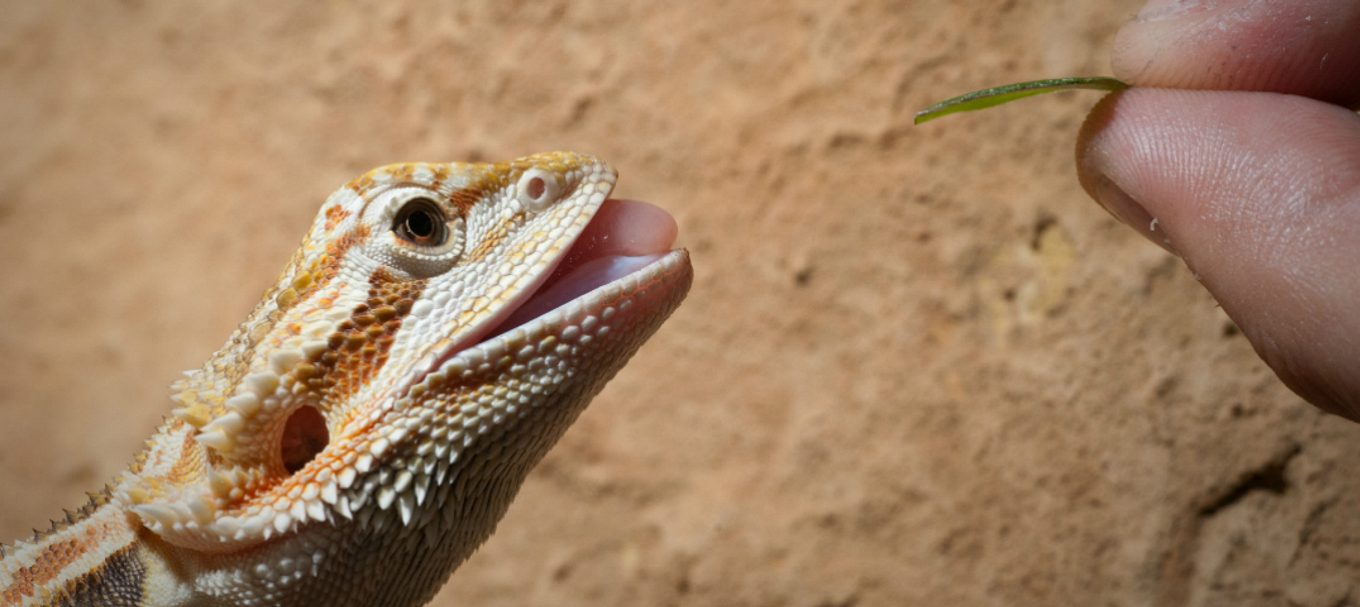
How to care for your pet bearded dragon
Bearded dragons live for about 10 years. They are calm creatures that look like colourful mini dinosaurs and are usually easy to handle, plus they have a great temperament – but they will stare you down if dinner is late!
In South Australia you don’t need a permit to keep central bearded dragons, as it is one of the 97 Australian native animals that are now exempt from permit requirements.
All reptiles have husbandry requirements that you need to know before bringing one home – and beardies are no exception.
Here are three ‘musts’ to take on board to ensure you’re caring for your bearded dragon properly:
1. Enclosure musts
The most essential part of keeping a bearded dragon happy and healthy is creating the right environment.
They need an enclosure that is warm, with rocks and logs for basking and hiding, a heat lamp and a UV light.
Bearded dragons are reptiles that love the full sun, so plenty of lighting is essential to keep your beardie heathy.
The heat source should be at one end of the enclosure so the beardie has a ‘heat gradient’ and can move to a warmer or cooler spot as it wishes.
Be aware that over time, the UV output of a black light diminishes so the globe does need to be changed.
2. Diet must-haves
Bearded dragons are omnivores – eating insects and plants.
Juvenile dragons should be fed daily, while adults can be offered food every second day.
Fresh water should be available to the dragon at all times and changed daily.
You can feed them a range of live insects like crickets, woodies and silkworms, as well as fruit and vegetables like kale, apple, carrot, broccoli and beans. They also love the occasional pinkie mouse, which are available from specialist pet shops.
Commercially available lizard pellets can also be mixed through the chopped fruits and vegetables to provide extra nutrition.
Be aware that baby beardies can be attacked by crickets (yes, really) so if you are feeding any live insects, always make sure you have food for the insects in the enclosure as well so they won’t resort to eating your dragon.
3. Red flag must-knows
Having a comfortable and clean enclosure and a balanced diet is very important to the beardie’s health.
But like anyone, sometimes they can get sick. If your bearded dragon is showing any of these signs it is best to take him or her to a reptile vet:
- loss of appetite
- diarrhoea
- lethargy
- retained skin around toes or tail tip
- abnormal movements
- disorientation
- twitching/tremors
- darkening of the skin.
Reptiles have slow metabolic rates so they tend to get sick slower than mammals and take longer to recover.
They are also very prone to infections – which is why it is essential that their enclosure is kept clean and their food and water is always fresh.
Where to get one?
There are many ethical sellers of native animals in SA and now that these wonderful creatures don’t require a permit to be kept as a pet, it is likely that many will appear in your local pet shop.
It’s important to note that while these beautiful creatures don’t require a permit to be kept, they are fully protected in the wild.
Do you love the idea of having an Australian native animal as pet? Here’s our10 top native animals to have as pets in South Australia.
(Main image courtesy of Marcin)





